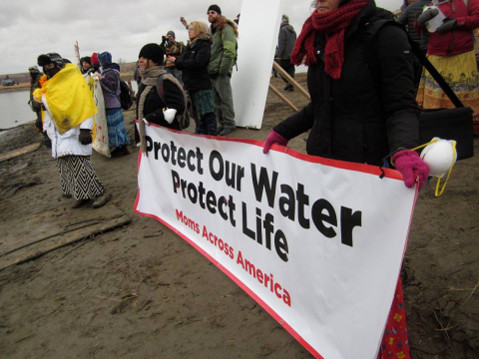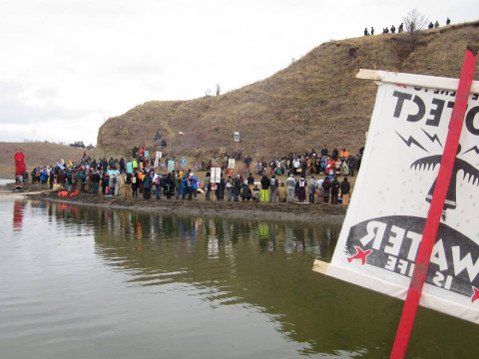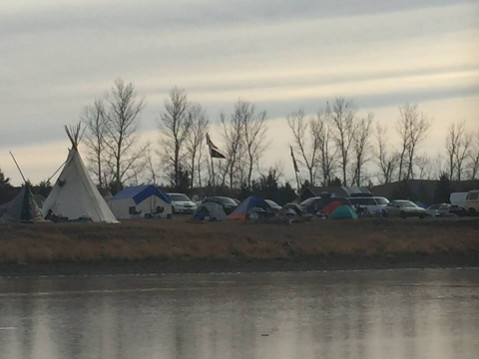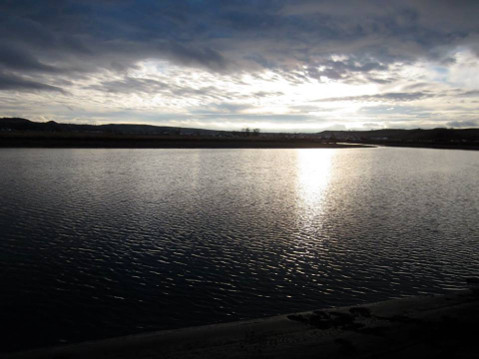Six Days at Standing Rock
Fight for Clean Water with a Clean Heart

I spent six days at Standing Rock over the Thanksgiving holiday. On my first night there, militarized police turned violent against freezing, peaceful demonstrators. The Morton County PR machine later announced that water protectors were “rioting” and “setting cars on fire.” Closer to the truth: law enforcement shot water protectors with rubber bullets and water cannons in 23 degree weather and threw canisters of tear gas into their midst.
One woman was hit with a concussion grenade and subsequently was airlifted to Minneapolis; her arm was hurt so badly that amputation is a treatment option. An elderly Lakota man who was praying with his hands up withstood multiple rubber bullets as well as water cannon rounds. I saw no water protectors acting in a violent manner. They were trying to protect the man praying. They faced policemen outfitted like a SWAT team, and they may have thrown water bottles at them. They were also trying to keep fires alive to warm 400 water protectors who been blasted with tear gas and water cannons, and faced hypothermia in the freezing cold night. The cops kept dousing the warming fires with their water cannons while their tear gas canisters started brush fires that the water protectors put out. There were sirens sounding and helicopters whirring all night.
In a large, dusty tent at Oceti Sakowin camp, as we learned how to link arms and see the strangers to our left and right as “relatives,” as family, Standing Rock facilitators of various ages, ethnic backgrounds, and gender identities entreated us to mind that we were guests of the Sioux. The repeated over and over that the ask coming down from the Council of Elders was clear: Do not go to the front lines without a clear heart. This was no anarchist black bloc; this was a prayerful ceremony of resistance. “If you don’t have your spiritual self together,” they said, “if you cannot be prayerful on the front lines, then go home.”

I was there with my young cousins. One, a 21-year old budding photographer, prayed to our ancestors for the first time at the Sacred Fire. His sniffles as he came back to the tent to reload his camera with film came from the cold and the tear gas and his sadness at the blatant human rights abuses he has just witnessed. His sister, a 24-year-old who had spent the better part of this fall at Standing Rock, returned from the front lines and curled up in the door of the tent as she put on more gloves. “Who does that?” she asked, heartbroken. “Who does that to peaceful natives on their own land?”
There were glimmers of hope. On the night of tear gas and water cannons, one woman in solidarity with Standing Rock said the Lord’s Prayer with three policemen, who cried. There were resignations. At the Sacred Fire, native people from New Zealand shared a dance; an Alaskan Native American shared a story at the microphone about forgiveness and how it made her heart “explode”; a Lakota youth who had been there for half a year, as one of the original water protectors, had to stop speaking and wipe away a tear before saying, “I dreamed, since those early days, that people would come, that people would come, and you did; you heard my prayer.”

In the purple, frozen dawn, under snow-covered tents and teepees, stirring in a cocoon four sleeping bags, my cousins and I heard the deep voice of a First Nation citizen on a loudspeaker, cruising around in a truck: “Get up! It’s a beautiful day to protect the water!”
Here is what I learned: to be grateful for my little cousins being in my life and being family with whom I could be at Standing Rock, family with whom I could start to do the real work of an ally to a movement like #NODAPL; to think through what it means to have the blood of the persecuted Jews and the blood of American settlers run in our veins, and how to be present and responsible with that dual legacy.
Here is what I learned: Showing up is just the beginning, and the work is far from over. And that work continues as long as allies are necessary for certain groups of people who don’t enjoy the privileges that should be human rights in America.
I offer thanks today, to each of the generous and patient Lakota Sioux who taught those of us wishing to be allies how much we have to learn. I suspect I am not alone among those who were guests of the Lakota Sioux at Standing Rock when I say that the impact their conversations with me and their examples had on my life was much greater than the impact I contributed. I will try harder to live with honor and integrity everywhere I walk because of what they taught me at Standing Rock.
I still Stand with Standing Rock.
I hope to live in such a way that I always will.




